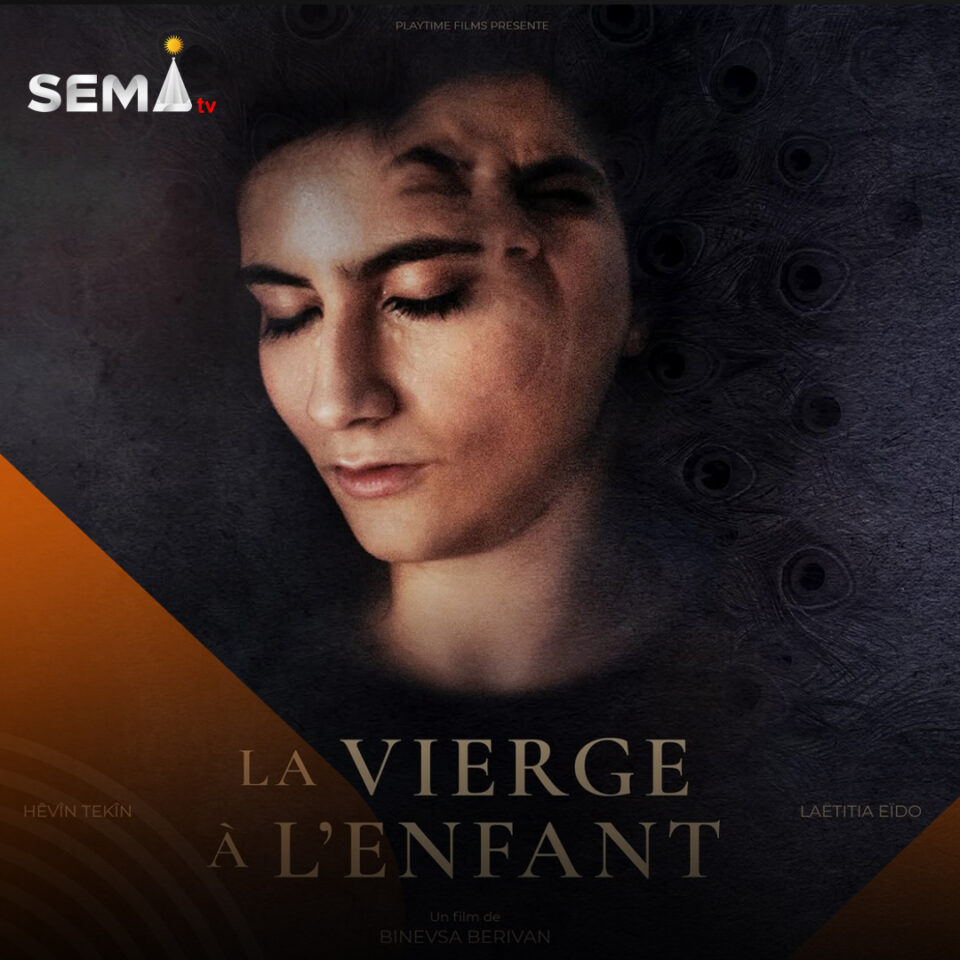Sema
Sakar Kamil
The simple complete history of the Kurdish people is full of tragedy, genocide, and destruction. Their life has been filled with misfortune, displacement, and continues under the veil of tragedy until now. In today’s world, cinema brings tragedy to language, and any misfortune that befalls peoples, religions, and nations of the world quickly becomes known to the whole world through cinema, spreading rapidly as people learn about the tragedies of those peoples, religions, ethnicities, and nations, becoming a quick way to deliver the message.
On the sidelines of the Duhok Film Festival (December 9-16, 2024), a film titled “THE VIRGIN AND CHILD” was screened, directed by Kurdish director from Northern Kurdistan (Benevşa Berivan), produced in 2024 with a duration of 81 minutes. Briefly, this film discussed one of the Kurdish tragedies, specifically the Yazidi tragedy, who are an ancient and original Kurdish religion, and throughout history have faced many massacres and genocides, with the latest genocide occurring on (3/8/2014) at the hands of the so-called Islamic State (ISIS) extremists. Hundreds of thousands of Yazidis became victims and faced massacre, destruction, kidnapping, rape, and genocide. This genocide continues until now, with the majority of Yazidi people living in camps and unable to return to their homes due to the instability of the political, regional, and international situation. Thousands of girls and women were kidnapped and tortured in the most brutal ways, although a large number of them were rescued, hundreds if not thousands are still missing.
In this decree, Yazidi girls and women paid a heavy price as Kurds, then as Yazidis, and finally as women. “THE VIRGIN AND CHILD” tells the story of a Yazidi girl who was kidnapped during the genocide along with her mother and sister by a Belgian ISIS terrorist. This member of the terrorist Islamic State ISIS brutally dealt with and raped the girl named Avesta Haji. The film’s events begin in Belgium where Avesta is pregnant and says she won’t abort her child so it can become living evidence of the crime committed by the Belgian ISIS member. Throughout those nine months, Avesta lives in psychological turmoil and her condition deteriorates severely. After the Belgian ISIS member is killed and buried in Belgium, Avesta visits his grave and spits on it as revenge for his actions against her. After the court case ends, she leaves her child and, dressed in white, faces the sun – a symbol of victory and life.
In this film, I saw courage, bravery, and resilience against life’s obstacles from Avesta. Avesta was a symbol of endurance, sacrifice, and revenge, a symbol of a bright future and a day full of light, a symbol of the white and purple dream of a Kurdish woman, Avesta was a symbol of Yazidi oppression.

